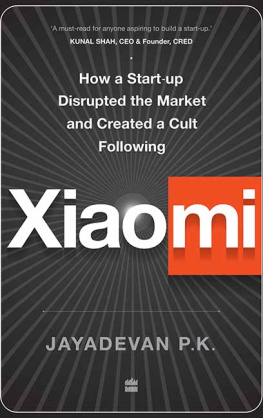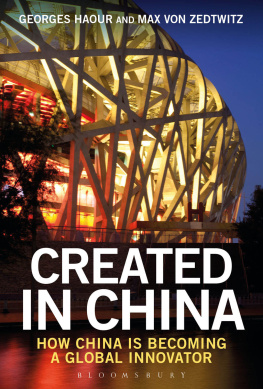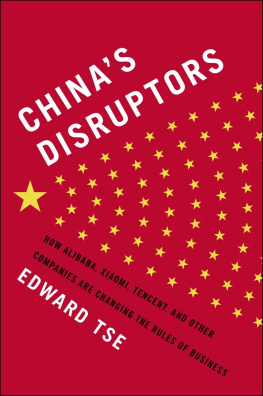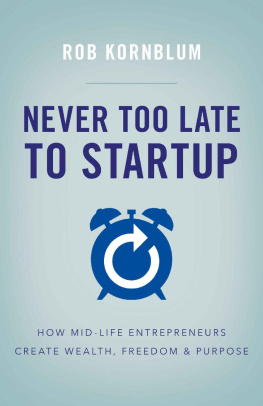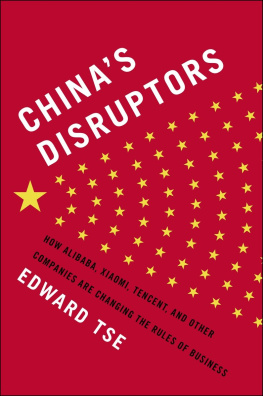Table of Contents


To
Dhruva
Contents

M ANY YEARS AGO, I had joined the local news desk of a prominent newspaper in Bengaluru, the sleepy south Indian town that became the countrys Silicon Valley. After trying my hand at crime reporting and general business journalism, I developed an interest in tracking technology. Among other things in the mid noughties, I had half a page in the paper to feature new gadgets every week. Nokia, Blackberry, Samsung and a few other companies were regulars on the page. While I was enjoying my work, my salary needed a boost. (The media industrys decline was just about beginning, and salaries were as poor then as they are today.)
Getting out of the rather difficult circumstances that I found myself in, I moved on to the Economic Times to report on technology. The business daily was Indias largest pink paper by circulation, and I worked with some of the best journalists of the time. My job was mainly to write about technology services companies. Soon I got bored with tracking quarterly results and rehearsed statements. This was around 2012, and Indias start-up ecosystem was in its infancy. I quit the paper to join a start-up blog. I didnt ask for a raise. I was just happy to be able to write about start-ups and their founders. It was something new, and their excitement was infectious. In those days, start-up was not a mainstream beat in India. Only niche blogs wrote about them.
On the personal front, there were months when I was flat broke. One evening I sold my old Nokia 5800 for 300 at a second-hand electronics shop to buy a packet of biryani. That is still the best biryani Ive ever had. The two years at the start-up blog were also my best two years ever. As start-ups became the buzzword, I went back to the pink paper to write about them. I was able to upgrade my life a little. I moved into a middle-class apartment with my family. I got some furniture and so on. After selling the Nokia phone, I used a feature phone for a few days. But now I had to upgrade my phone. After much research, I zeroed in on a Micromax handset.
Micromax, a Gurgaon-based company that began making handsets in 2008, had some smartphones that were affordable on a young journalists salary. It was also a leading brand and had some interesting features such as dual SIM and a great touchscreen display. Going from a phone that ran on Symbian (Nokias proprietary operating system that failed) to an Android-based phone was like suddenly being able to breathe after being underwater for a while. There were tens of thousands of apps to play with and an operating system that worked really well.
But I soon realized that I was running out of memory faster than I could delete apps, music and photos. The phone began to slow down, and I was starting to get that same sinking feeling I had the evening I sold the Nokia phone. It was beginning to frustrate me. Around the same time, I had the opportunity to visit the office of e-commerce firm Flipkart for a story about how it scaled its back-end systems to meet the unprecedented demand for a new phone. The phone was a relatively unknown brand called Xiaomi. And everybody was surprised it sold out so quickly. In fact, they even thought their website had a glitch when buyers complained that they were getting out of stock messages. But it turned out that, just like me, there were millions of Indians waiting for a credible (and affordable) alternative to the models then available.
The phone was priced unbelievably low for the features it offered, and that was its main draw. This was the sweet spot Xiaomi hit. As the years went by, I watched Xiaomis phenomenal growth in India. It swept away Micromax and other Indian brands and became Indias largest smartphone company.
In the winter of 2018, I went to Beijing on a reporting assignment. I suddenly had the urge to meet Xiaomis co-founder Lei Jun, whom Id seen at a press conference earlier in Bengaluru. I wrote an email to the companys communications team but did not get to meet Lei. I did the next best thing: I hung out at Xiaomis first store in Beijing, near its headquarters in Haidian. I also took a stroll in Haidian Park, where I saw real-world applications of artificial intelligence (AI)such as a running track that could identify runners and keep score of their mileage, a virtual Shifu who taught tai chi to visitors, and an almost autonomous bus. It was a stunning display of Chinas technological progress. My previous visit to Beijing was in 2011, and the difference was evident. Chinas Silicon Valley was evolving rapidly. And in it, companies like Xiaomi were hatching world-domination plans. I was awestruck and a little sad. My admiration was tainted with melancholy because I had seen Bengaluru, Indias Silicon Valley, evolve into an urban mess just like most Indian cities that once held promise. At the same time, China seemed to have pulled ahead to become a global superpower. I had begun to track Chinese technology companies and their growth back in India closely. The seeds of this book were sown in my head then. Xiaomis rise and global success is an amazing story of many factors that came together. Its resounding success in India encouraged many more Chinese companies to look at India as a potential market. Xiaomis playbook is also a delight to decode. It is as if someone has masterfully knit together a future-proof strategy, carefully picking elements from many different industries and backed it with heads-down execution. It was a happy coincidence that a publisher was also looking for a book on Xiaomi. I got to know of this through a friend, and the book became a serious pursuit last year. I have tried to capture Xiaomis journey from a little-known software company in Beijing to one of the youngest companies to enter the hallowed Fortune 500 list. Ive also interspersed the book with elements of strategy that may be useful for other start-ups to understand. Xiaomi is also not very well understood. Most people still see it as a smartphone company. But Xiaomis ambitions lay much beyond that. The book attempts to throw light on the companys strategy to become an internet company and how user-centricity is core to it.
Ive put together this book after dozens of interviews and many hours of research. The book wouldnt have been possible had it not been for the diligent research and hard work by Anwesha Ghosh and the patience my editor Sachin Sharma of HarperCollins has shown. Also, thanks to Tanmoy Goswami, who put me in touch with Sachin; Josey Puliyenthuruthel, who advised me; Somnath Dasgupta, who made the book readable; Evelyn Fok, who reviewed the book and Ravish Bhatia, who helped me with my research. I am also thankful to my family, especially my wife Radhika, who cheered for me and put up with my moods though I did little to reciprocate their affection. I hope you like what you read.

W hen Xiaomi Corporation, a Chinese company, became the youngest debutant on the Fortune 500 list in 2019just nine years after it was bornit sent a clear signal to the rest of the world: Chinese product companies had arrived. It was an unprecedented feat for any smartphone company, let alone an unknown upstart from China with a hard-to-pronounce name to boot. Only a few companies had made it to the list this fast in the past. Facebook, for instance, made it to the Fortune 500 list in nine years. Other iconic companies such as Apple and Google made it to the list in their seventh and eighth years, respectively. But unlike these US-based mega-corporations that grew in the fertile grounds of Silicon Valley, Xiaomi was a distinctly Chinese start-up with global ambitions in the midst of the smartphone mega trend that swept across the world.

